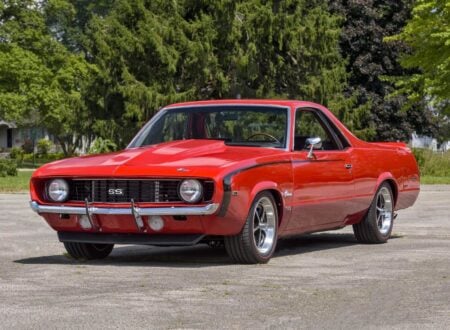This is a McLaren MP4-12C rolling display chassis, created to showcase the carbon fiber tub of the 12C as well as the front and rear aluminum subframes, the suspension, engine externals, and brakes.
A number of these display chassis were created at the time of the introduction of the McLaren MP4-12C back in 2011 as the company’s first all-new supercar since the legendary McLaren F1 from the 1990s.


How Did The McLaren MP4-12C Get Its Name?
The MP4-12C name was chosen as all McLaren Formula 1 cars since 1981 have been given the MP4 suffix – created after Ron Dennis’ Project 4 organization was merged with McLaren, resulting in “McLaren Project 4” or “MP4.”
The 12C in the name also has meaning, the 12 was the score given to the MP4-12C in McLaren’s internal Vehicle Performance Index, the company’s method of indexing the performance criteria both of both their competitors cars and its own.
The “C” on the end of the name simply stands for “Carbon,” to highlight the advanced carbon fiber tub used as the centerpiece of the car, named the “Carbon MonoCell.” Due to the complexity of the name, the car is now commonly referred to simply as the McLaren 12C.
The ProActive Chassis Control System
The suspension system on the 12C was advanced for the time, and still is today. Rather than more commonplace hydraulic shock absorbers and anti-sway bars the car was fitted with a newly developed “ProActive Chassis Control” system.


In short, the ProActive Chassis Control system is comprised of high and low pressure valves interconnected both front to back and left to right. When the car is cornering and pressure is applied more to one side as a result, the suspension stiffens to reduce roll.
This allows the car to have relatively soft and compliant suspension when being driven casually, and much firmer suspension when the driving conditions call for it.
The McLaren MP4-12C Display Chassis Shown Here
The McLaren MP4-12C display chassis you see in this article is entirely missing its most recognizable part, the body that was designed by Frank Stephenson and set the design language for McLaren heading into the 21st century.
The reason the body is missing is so that the chassis, suspension, and drivetrain can be shown off. These display chassis were built specifically to be shown at motor shows and dealerships. Though an engine and transmission were fitted, neither contained any internal parts, and so the car is undrivable in its current form.


The display chassis you see here is currently being offered for sale out of Switzerland. It was originally presented at various motor shows before being sent to the Pozzi McLaren dealership in Paris for longterm display – it was later bought by a private collector.
If you’d like to read more about this unusual piece of McLaren history of place a bid you can visit the listing here.





Images courtesy of Collecting Cars








